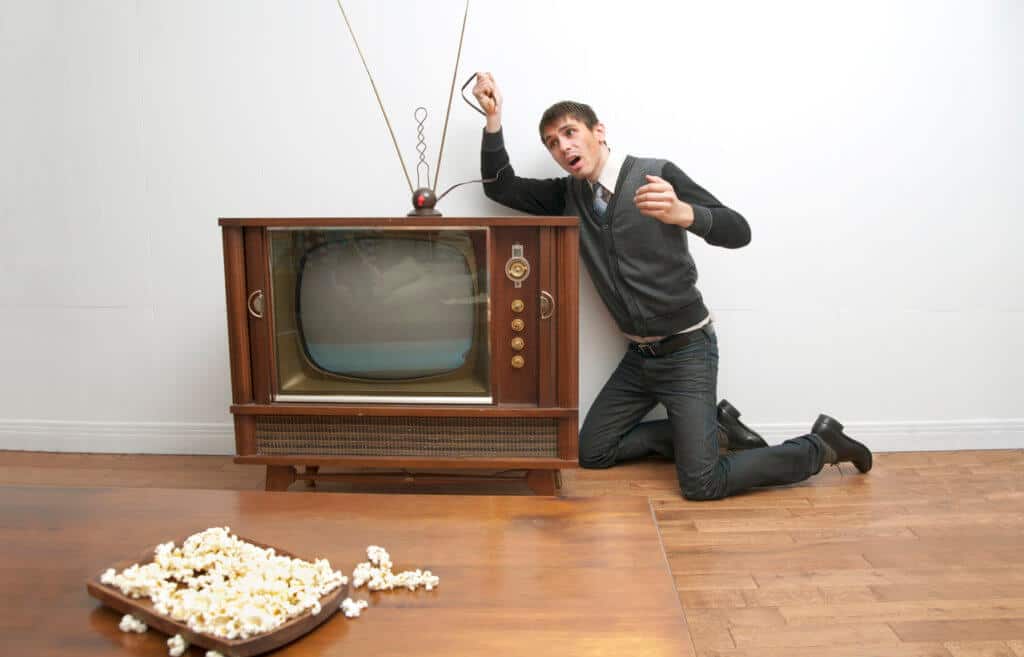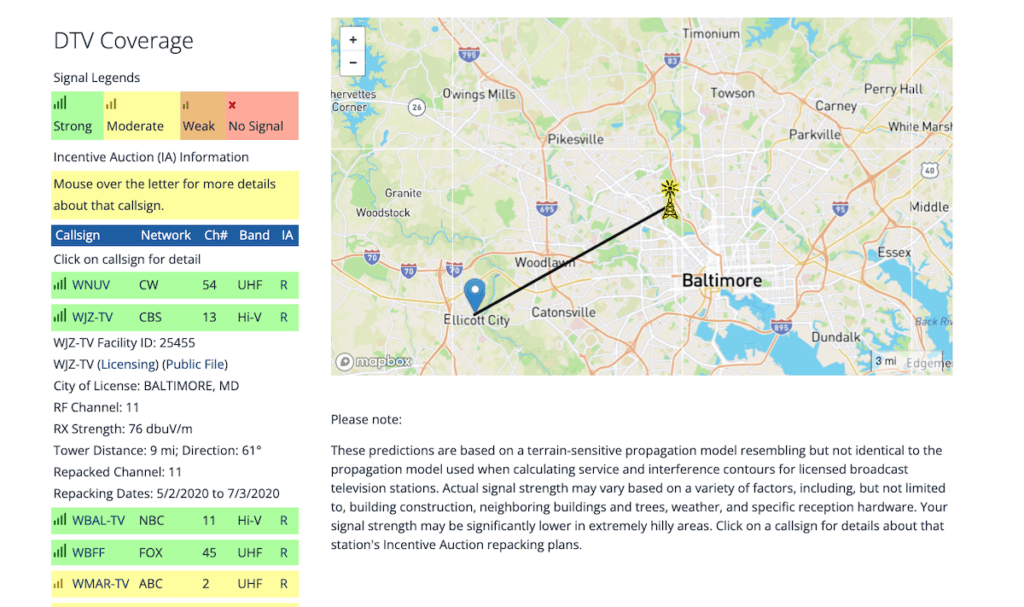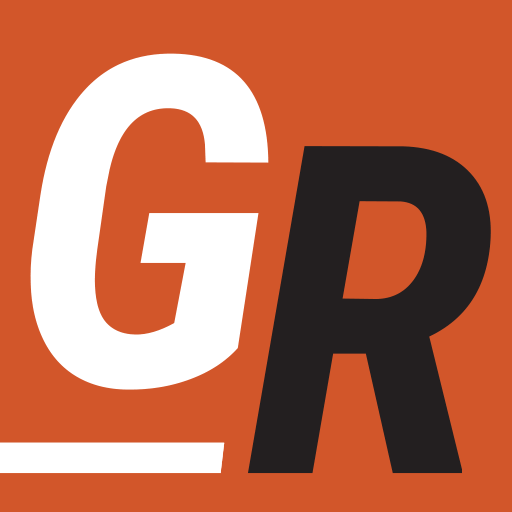
Please note, while this article focuses on improving indoor TV antenna reception, the same tips apply for using an outdoor TV antenna.
Setting up an antenna for free broadcast TV over the air can be difficult if you have weak TV signals. Today, I will explain how to boost antenna performance, get more channels, and improve reception on your indoor TV antenna. But first, we need to discuss “Noise Margin” and its relation to your TV antenna’s ability to receive a TV channel.
What is a TV Channels Noise Margin
A digital TV signal arrives at your doorstep with a finite ability to receive a TV channel’s signal. One of the easier ways to quantify this ability is “noise margin.” The noise margin, given in decibels (dB), is the amount of signal noise allowable before the TV channel’s signal can no longer be received.
The signal encounters noise on its way from the tower. Any obstacles or interference between the tower sending the signal and the antenna receiving it is noise subtracted from the noise margin.
If the noise margin is greater than 0, a TV should be able to receive that channel. However, there is also noise in the line between the antenna and the TV tuner. This noise is caused by the coaxial cable, signal splitters, and the tuner receiving the signal.
Any component between the antenna and the receiver has the potential to generate noise. If the noise is too great, it can lead to a negative noise margin and no reception. We can find the noise margin for all the channels in your area in a TV Fool report discussed in the next section on positioning your TV antenna.
TV Antenna Direction
Before deciding how to position your TV antenna, there are two pieces of information you will need. First, which channels have a positive noise margin at my location? Second, in which direction are the towers generating the signal?
The FCC has a great mapping tool to show you which stations are available in your area. It will let you know which stations have strong and weak signals in your area. It also indicates the direction of the tower for each channel. We can use the signal strength to estimate a “noise margin.” Generally, we can assume the following noise margin values:
- Green – we have about 45 dB to work with
- Yellow – we have about 30 dB to work with
- Orange – There is little room for error. There is less than 15 dB of noise allowable with these channels
- Red – This station isn’t coming in without a directional antenna that has signal gain built-in to focus in on the tower
To find the direction of each channel, click on the station to see where the tower is relative to where your antenna is. The image below shows what the FCC digital TV coverage report looks like.

If all the channels of interest are in the same direction, you may want to consider a directional antenna (see our guide to TV antennas for more information). A directional antenna receives signals from one direction instead of an omnidirectional antenna that can receive signals from multiple directions.
The benefit of a directional antenna is a higher TV antenna “gain” than omnidirectional TV antennas. This gain (also in dB) is added to the noise margin, counteracting some noise loss. This type of gain is different than gain from an amplifier, which we’ll discuss later in this article.
Essentially, the more directed an antenna, the higher the TV antenna gain. The obvious drawback to a directional antenna is the need to re-point the antenna when switching the channel to a tower in another direction. If all the towers are in the same direction, then this isn’t an issue. For more information on directional or omnidirectional antennas, please see this antenna guide.
Indoor TV Antenna Reception
The noise margin estimates the available noise threshold for that station at your location, taking the terrain into account. However, it doesn’t account for trees or buildings near your house in the path of the signal.
Typically TV signal towers are tall enough to ignore most of the buildings and trees in the way of the path to a TV antenna. However, a tree or building close enough to shadow your house could present a signal loss.
Generally, if you can look up at a 45-degree angle in the tower’s direction and see the sky, there shouldn’t be an obstacle subtracting from the noise margin. In various studies, a building in the way has been shown to present a loss of 10-21 dB. If your antenna is in the shadow of a building, then angling it toward the roof of that building will minimize noise loss.
Trees are another major noise contributor. There was a study online showing attenuation due to different types of vegetation. However, it’s no longer available. It found the average TV signal attenuation from trees can range anywhere from 8.6 dB to 17.8 dB, depending on the type of tree and wind conditions.
Once antenna gain (if any) and obstacles are accounted for, subtract 10 dB to account for inclement weather and various sources not covered. There are too many potential causes of TV signal loss to list in this article, so a noise buffer is wise to ensure reception in non-ideal conditions.
If the noise margin is above 35 dB after subtracting noise estimates, your house is a candidate for an indoor TV antenna. Note, there are losses associated with passing through the exterior walls or roof. The ideal spot for an indoor TV antenna is in front of a non-metal window with no screen. A loss of 2 dB may be assumed in this perfect situation.
Otherwise, an exterior wall can present an average of 10-15 dB loss to the signal, which is subtracted from the noise margin. However, this loss can be as high as 40 dB depending on the construction. For more information on the attenuation due to noise and obstacles, check out this reference.
Eliminate Signal Noise in the Line
If there is enough noise margin left once the antenna receives the signal, we want to examine the line to the television. This signal loss is due to splitters, the coaxial cord, and the TV tuner. The standard RG-6 coaxial cable presents a signal loss of 5.65 dB per 100 feet of cable.
There are more efficient, more expensive coaxial cables for indoor TV antenna installs if required. Wikipedia provides an excellent reference on coaxial attenuation.
Splitters also present losses to the noise margin. It doesn’t matter if you split the coaxial with one or more splitters. Calculate the signal loss by subtracting the number of final outputs multiplied by 3.5dB. Subtract that number from the noise margin. Even if an output isn’t used, it still counts as noise. For this reason, it is best only to split the signal as needed.
The connections from the antenna and tuner measure a loss of 1 dB. The TV tuner also adds noise. If the information isn’t available in your TV tuner or televisions owner’s manual, a loss of 8 dB should be assumed.
In most indoor TV antenna installs, a preamplifier can be used. This device should be installed before any splitters. It adds gain to the signal received by the antenna to compensate for noise between the antenna and TV. Unlike the gain provided from directing the TV antenna, this device will not be able to increase the noise margin beyond what is initially received by the TV antenna.
Indoor TV Antenna Amplifier
There is a loss to the noise margin associated with an amplifier. Since this loss is less than the loss generated by the TV tuner, it makes sense to use an amplifier in many cases. For instance, a TV tuner with a loss of 8 dB and a 2–way splitter would amount to an 11.5 dB loss (8 + 3.5db for the splitter). Add a loss of 2.9 dB for an assumed 50 feet RG-6 coaxial cable, and then a one more dB loss due to the connection on either end brings the total loss to 15.4 dB.
If a 15 dB gain amplifier were added to the line just after the antenna, the loss would only be .4 dB. However, the amplifier also carries noise. Let’s assume 3 dB bringing the total noise loss of the line to 3.4 dB.
However, if a 20 dB gain amplifier with the same noise level were added, it would not add 1.6 dB to the margin. It would merely cancel the loss added by the line to the TV, ensuring the signal strength is unimpeded from the antenna to the television. Thus, a preamplifier will not help a TV antenna pick up a signal already under the noise margin.
When Not To Use An Amplifier
There are situations when an amplifier is not necessary. It could even be detrimental to receiving a TV signal. If all the stations you want to receive hit the antenna with at least 30 dB of noise margin, and there is only 3 dB lost in the line, then there is no need to amplify. All the stations can already be received. Furthermore, if a signal is over-amplified, it could cause the tuner not to receive the station.
